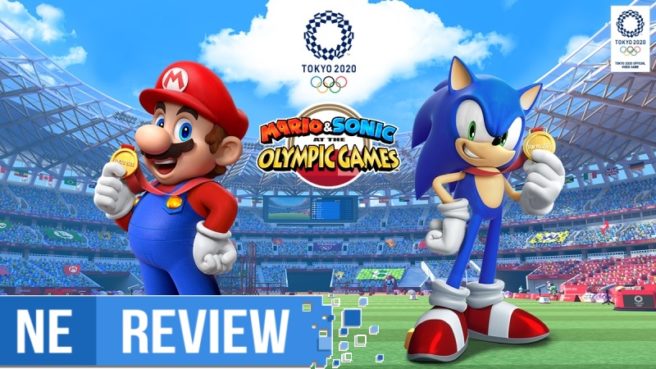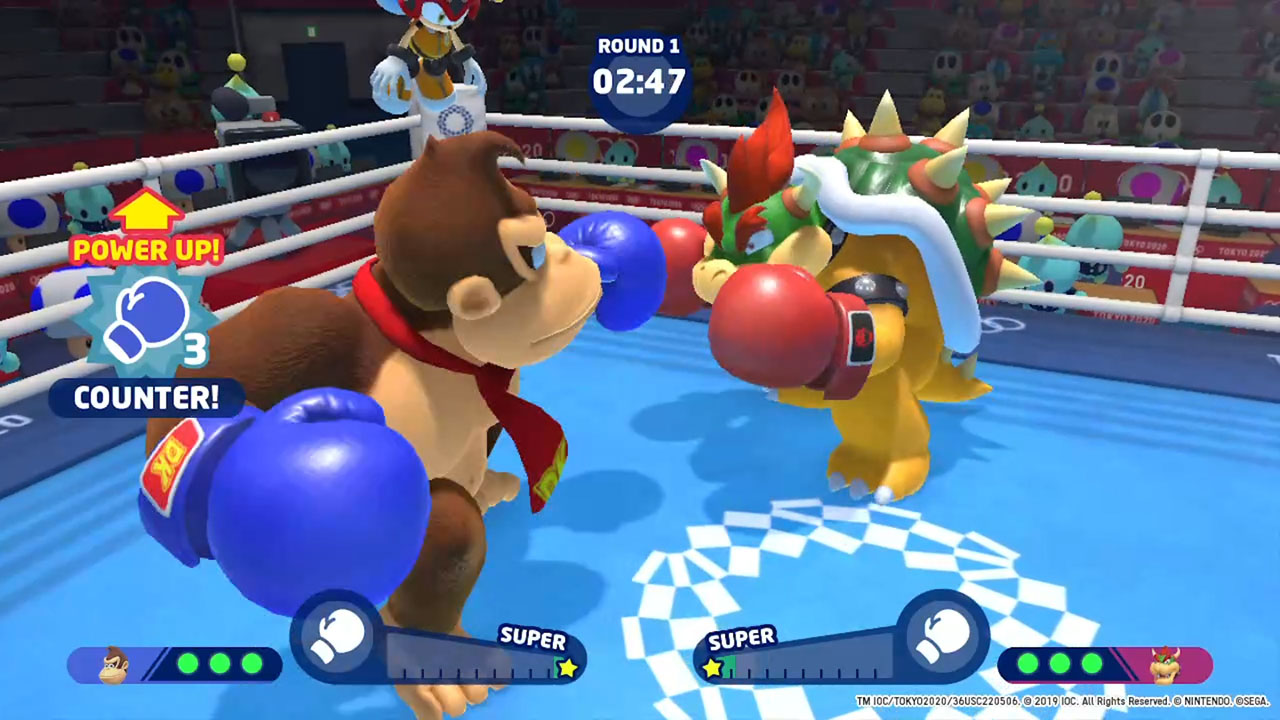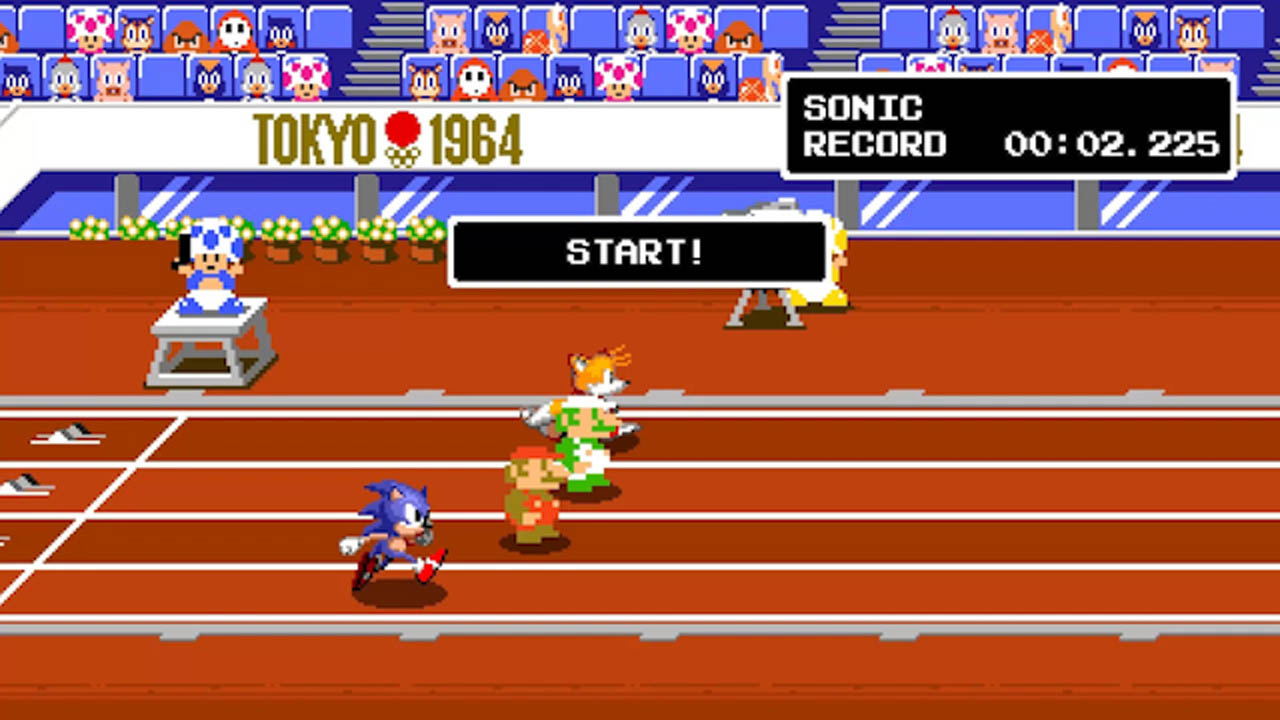[Review] Mario & Sonic at the Olympic Games Tokyo 2020
System: Switch
Release date: November 5, 2019
Developer: SEGA
Publisher: SEGA
It is often said that there are but two certainties in life, being death and taxes. I propose we add a third billing to that list: party games on Nintendo consoles. There isn’t a single saggy financial quarter that can’t be pumped up significantly by the presence of a mini-game collection featuring Mario and company, and this Christmas, SEGA (in partnership with Nintendo) have answered the call of duty by sending Mario, Sonic, and both of their respective entourages to the Tokyo 2020 Olympics. The initial novelty and shock value of an official game featuring both Nintendo and SEGA’s mascots may be somewhat dulled since the franchise’s first outing on Wii in 2007, but you could say that this new entry is the series’ most fitting one: two monolithic Japanese companies paying homage to one equally gargantuan Japanese event.
The central theme of Mario & Sonic this time around revolves around Japan’s presence throughout Olympic history, namely the country’s hosting of the Olympic Games in 1964 and next year, in 2020. The game’s newly-introduced story mode features hidden collectibles that contain all sorts of interesting tidbits of knowledge regarding Japan, the Olympics, and Japan at the Olympics. Outside of the more-ish hunt for these collectibles, you will unfortunately find a crushingly monotonous slog that even the most ardent Mario, Sonic or Olympic fan will struggle to bear. The crux of the game’s plot revolves around a retro-flavored game created solely by indie developer Dr. Eggman. Bowser and Eggman have plotted to trap Mario and Sonic within the game, but seeing as most of their rather cumbersome and unwieldy schemes usually go awry, they end up getting sucked into it themselves alongside the heroic duo. Tails, Luigi and the rest of the gang then have to put their heads together to figure out how to get everyone back to reality – by playing sports and having really long conversations with one another. It’s far from the worst setup for a crossover story I’ve ever witnessed, but the arduous way in which events unfold is sure to test the patience of anyone over the age of eight.
Lengthy and unfunny exposition is the order of the day, and it’s routinely traded – in unskippable text-box format – between characters across a suite of visually competent, yet fairly desolate hub zones. Each of these locations are rather sterile recreations of the various venues in which the Tokyo 2020 Olympics will take place, and you unlock more of them as you progress through the story. At each new location, Luigi and Tails repeatedly have their arms twisted into partaking in whatever sport is on offer – all in the hope of furthering their knowledge as to “what the bloody hell happened to our mates”. Speaking of which, various chapters of the story take place within the in-game cyber-prison that Mario, Sonic, Bowser and Eggman have ended up in, and these portions are portrayed using 8 and 16-bit graphics taken straight from Mario’s NES titles and Sonic’s Genesis outings. It’s these sections in particular that highlight the aimlessness of the game’s story mode as a whole – the retro visuals of Mario and Sonic’s chapters are sure to appeal to older gamers, but the achingly childish, overly abundant dialogue sequences transform the overall experience into one huge missed opportunity that never commits to anything even remotely meaningful. What we could have had is a culminant celebration of Mario, Sonic, Japan and the Olympics, all coming together under one banner. What we got, was, well… everything I’ve just mentioned.
Things improve ever so slightly once you dig into the sports themselves. There are over thirty different activities on offer, and most of them – bar the ten retro mini-games you unlock via the story – are available to you from the moment you first boot up the game. Many will consider this appealing, as you don’t need to wade through tournaments and leagues in order to get to your sport of choice. The downside to this, however, is that you’re left with very little to work toward outside of the aforementioned paltry story – and the games themselves don’t warrant much in the way of replay value beyond working toward a new medal for easy, medium, and hard CPU difficulty. Multiplayer is where I feel the majority of players intend to get the most out of Mario & Sonic, but again, what’s offered locally is a miserly quickplay mode that has you choosing one sport, playing it for two minutes, then either playing it again or bouncing back out to the menu. Some kind of playlist or tournament mode would have beefed up the game’s couch-based multiplayer potential, but we’re only given the bare minimum in this regard which is a big mark on the overall experience. Online play is available, both in ranked and unranked varieties, but due to the game’s low pre-release player count, and the fact that each multiplayer lobby is split across each individual sport, I was unable to try it out prior to this review being published.
In the absence of any other engaging elements then, the entire game’s appeal is placed on the shoulders of the mini-games themselves – and that’s far too much of a responsibility given the bulk of what’s featured here. There’s a certain expectation of quality I associate with seeing Mario and his friends on a screen in 3D – one that is born from decades worth of intuitively designed games with ravenous appeal and deep replayability. Mario & Sonic at the Olympic Games Tokyo 2020 is not of those games. Just about all of the included sports are essentially boiled down to canned animations and weightless quick time events, with very little sensation or feedback. The few that do allow for some kind of free, kinetic movement (such as Equestrian or Skateboarding) feel sluggish, unresponsive, and ultimately lacking in any considerable depth beyond simple timing. There’s also the issue of controls – even fundamentally similar activities such as the 100m and the 110m Hurdles have just enough disparity between them to significantly hinder your muscle memory. Optional motion controls are available for most of the mini-games, but you’re much better off sticking to buttons when you can – the unwieldy nature of Joy-Con waggling only serves to hurt the game further. All in all, the core sports are a forgettable combination of needlessly intricate control schemes and shallow “one and done” experiences. Rugby 7’s is okay.
About the only degree of tactical consideration you have within the game is in choosing which of the twenty available characters to play as. Headline characters like Mario and Sonic are good all rounders, whereas the likes of Daisy, Shadow and Donkey Kong will have specific advantages such as faster serving in Table Tennis or easier landings in Gymnastics. There’s no full-on statistics screen for each character like in previous Mario & Sonic games, but it does at least provide something worthwhile to base your decision around. Beyond the traditional Olympic sports included in this entry, SEGA has also included “Dream Events”, which is the game at its most unbridled and creative. That may sound like a compliment, but these activities unfortunately fall victim to the exact same pitfalls as the bland and repetitive core mini-games. There’s Dream Shooting, Karate and Racing – with the latter being the best of the bunch, even if it plays like a slightly rougher variant of Sonic Riders.
The Verdict

Comparing Mario & Sonic at the Olympic Games Tokyo 2020 to something like Super Mario Party is a great example of why quality will always trump quantity. Sure, Super Mario Party was lacking somewhat in content compared to earlier entries in the series, but it was focused, tight, and creatively abundant in what it offered. The included mini-games were also framed within the context of the board game, an overarching experience with enough emergent, random elements to keep you and your friends entertained over a sustained period of time. The only alternative context that Mario & Sonic offers for its mini-games is a woeful story mode, and the games themselves lack the level of polish and cohesion that we’ve come to expect from Nintendo’s own titles over the years. The “easy to learn, hard to master” appeal of Nintendo’s in-house design is nowhere to be seen, and it’s sorely missed. This particular blend of Mario, party games, and the holiday season may be just enough to keep younger gamers enthralled beyond the one hour mark this Christmas – but for everyone else, it’s merely a momentary diversion.
Mario & Sonic at the Olympic Games Tokyo 2020 review copy provided by SEGA for the purposes of this review.


